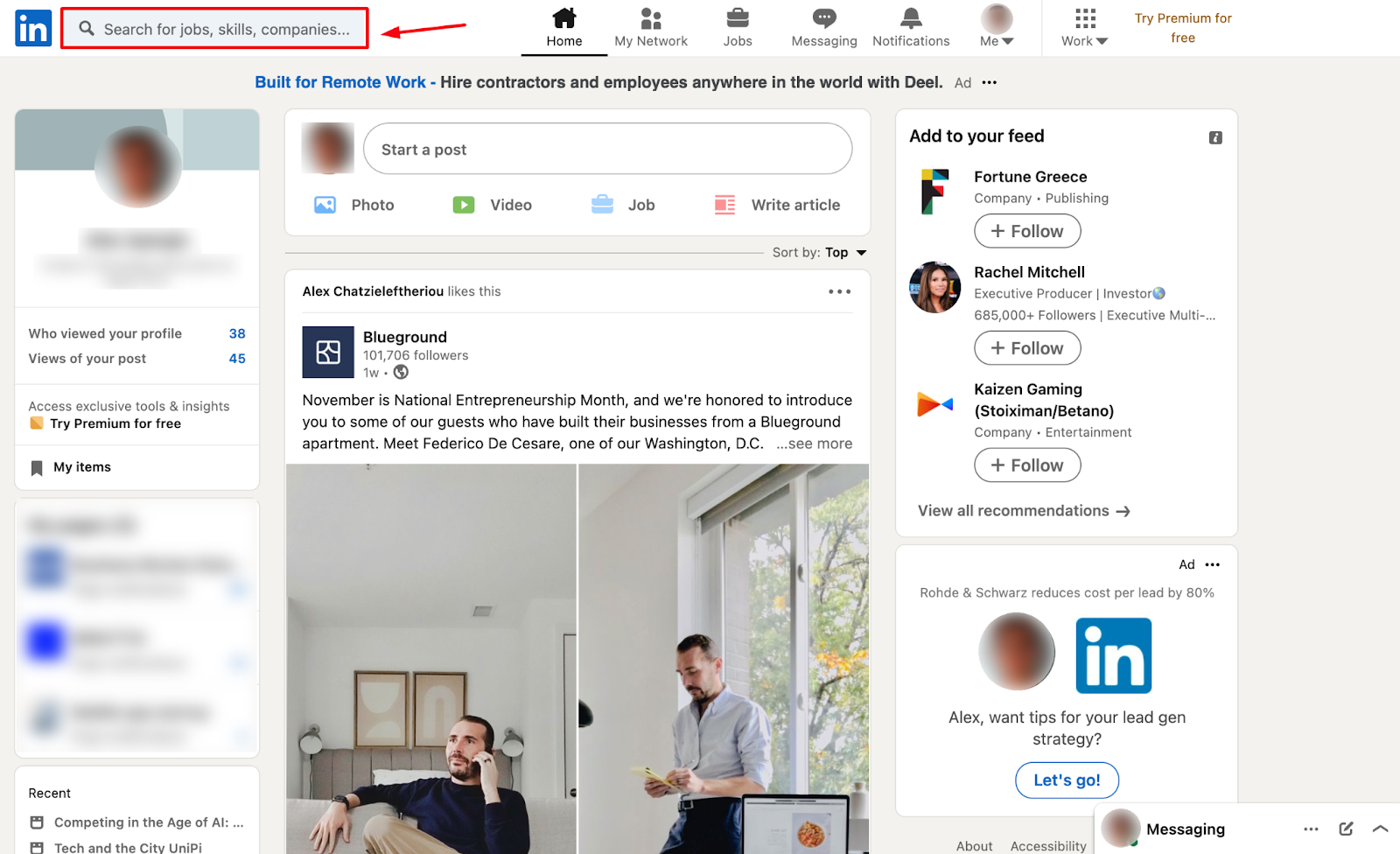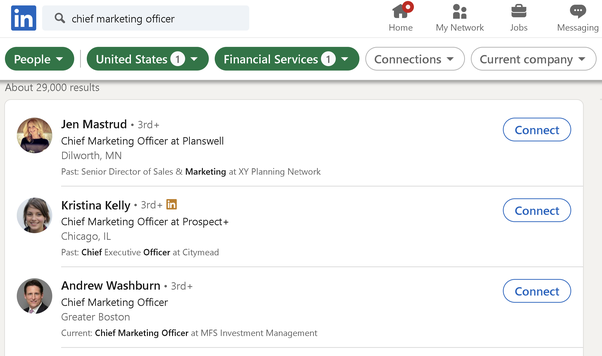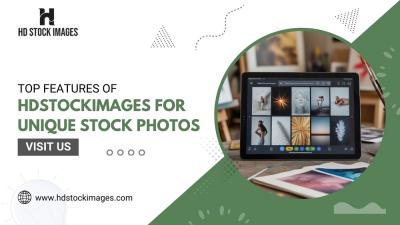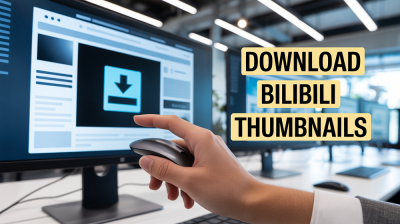Collecting emails from LinkedIn profiles can be a powerful way to expand your network and reach out to potential clients or collaborators. However, it's essential to approach this task ethically and in compliance with LinkedIn's guidelines. In this post, we’ll explore effective strategies for gathering emails responsibly, ensuring that your outreach is respectful and aligned with best practices.
Understanding LinkedIn's Policies

Before diving into the methods for collecting emails, it’s crucial to understand LinkedIn’s policies. LinkedIn is a professional networking platform where users expect a certain level of privacy and respect regarding their personal information. Here are some key points to consider:
- User Consent: LinkedIn emphasizes the importance of consent. Always ensure that you have the permission of the user before reaching out for their email address. This fosters trust and maintains the integrity of your networking efforts.
- Data Scraping: Engaging in data scraping or using automated tools to collect emails is against LinkedIn’s terms of service. Not only can this result in your account being restricted or banned, but it also damages your professional reputation.
- Respect Privacy Settings: Many users customize their privacy settings to control who sees their contact information. If a user has chosen to hide their email, it's a signal that they may not want unsolicited contact.
To navigate these policies effectively, consider these ethical approaches to collecting emails:
- Engagement: Start by engaging with your LinkedIn connections through meaningful interactions. Comment on their posts, share relevant articles, or send personalized messages. This establishes rapport, making them more likely to share their contact information willingly.
- Networking Events: Participate in virtual or in-person networking events. Often, attendees are more open to connecting outside of LinkedIn and may share their emails directly during these interactions.
- Content Creation: Create valuable content that resonates with your audience. When you share insightful articles or resources, you can invite readers to connect with you for further discussion, naturally leading to email exchanges.
By understanding and adhering to LinkedIn’s policies, you can build a network that’s not only extensive but also ethical. Remember, the key to successful networking is building relationships based on trust and mutual respect.
Also Read This: What Does InMail on LinkedIn Mean: A Complete Guide to LinkedIn’s Messaging Feature
3. Importance of Ethical Practices in Email Collection

Collecting emails ethically is not just a legal obligation but also a cornerstone of building trust in your professional relationships. When you operate ethically, you’re not only respecting the privacy of individuals but also enhancing your own brand’s reputation. Here’s why ethical practices should be at the forefront of your email collection strategy:
- Building Trust: When people know that you respect their privacy, they’re more likely to trust you. This trust can lead to stronger relationships and a more engaged audience.
- Compliance with Regulations: With laws like GDPR and CAN-SPAM in place, unethical practices can lead to severe penalties. Following ethical guidelines ensures you're compliant.
- Positive Brand Image: Companies that prioritize ethics often enjoy a better public perception. This can translate into higher conversion rates and customer loyalty.
- Quality Over Quantity: Focusing on ethical practices means you’re more likely to attract genuinely interested prospects, leading to a more engaged email list.
So, how can you ensure your email collection practices are ethical? Start by being transparent about why you’re collecting emails and how you plan to use them. Simple practices like including a clear opt-in option and making it easy for individuals to unsubscribe can go a long way in maintaining ethical standards.
Also Read This: Should You Put Your Resume on LinkedIn? Tips for Building Your Profile
4. Methods to Reach Out on LinkedIn
Once you’ve identified potential contacts on LinkedIn, the next step is to approach them effectively. Here are some methods to make your outreach on LinkedIn more effective and personable:
- Personalized Connection Requests: Always customize your connection requests. Mention something relevant from their profile, such as a shared interest or a recent achievement. This shows that you’re genuinely interested in connecting.
- Follow Up with a Thank You Message: After they accept your connection request, send a brief thank you message. This can set a friendly tone for future interactions.
- Engage with Their Content: Before reaching out directly, engage with their posts by liking, commenting, or sharing. This creates familiarity and shows that you value their insights.
- Use InMail Wisely: If you’re using LinkedIn Premium, utilize InMail for direct outreach. Ensure your message is concise and adds value—perhaps a resource or insight related to their industry.
Here’s a little template you can adapt for your outreach:
| Template Component | Example |
|---|---|
| Greeting | Hi [Name], |
| Personalized Note | I noticed your recent article on [Topic]—it really resonated with me! |
| Value Proposition | I’d love to connect and share insights on [Relevant Topic]. |
| Closing | Thanks for considering, and I look forward to connecting! |
By utilizing these methods, you can create a more effective outreach strategy that resonates with your LinkedIn connections while maintaining ethical standards in email collection. Happy connecting!
Also Read This: How to Block a Person on LinkedIn: A Step-by-Step Guide to Managing Your Connections
5. Using LinkedIn's Networking Features
Networking on LinkedIn isn't just about connecting; it's about building relationships that can lead to valuable conversations. By effectively using LinkedIn’s networking features, you can organically grow your email list while remaining respectful of others' privacy. Here’s how:
1. Personalized Connection Requests: When you send a connection request, take a moment to personalize your message. Mention something specific about their profile or shared interests. For example:
- “Hi [Name], I noticed we both have a passion for digital marketing and are in similar industries. I’d love to connect and share insights!”
This approach not only increases the chances of acceptance but can also pave the way for future discussions where you can ask for their email in a natural context.
2. Join Relevant Groups: LinkedIn Groups are a goldmine for networking. Participate in discussions and add value. Once you establish rapport, you can invite members to connect with you. During your conversations, you can gently suggest sharing contact information for deeper discussions.
- “Hey [Name], I really enjoyed our chat about content strategies. Would you be open to sharing your email so we can continue this discussion?”
3. Engaging with Content: Regularly post content relevant to your industry and engage with posts from others. When you comment thoughtfully, it can attract attention and lead to connection requests. After connecting, you can engage in a private message where you can exchange emails.
4. LinkedIn Events: Attend webinars, workshops, or live events hosted on LinkedIn. After the event, reach out to connect with participants. It’s a natural segue to suggest exchanging emails for further networking or collaboration.
By utilizing these features, you’re not just collecting emails; you’re creating a network of meaningful connections that can lead to fruitful professional relationships.
Also Read This: How to Cancel Your LinkedIn Premium Subscription: A Detailed Guide
6. Third-Party Tools for Email Extraction
While LinkedIn offers powerful networking features, there are also third-party tools that can help you extract emails ethically. However, it’s crucial to use these tools responsibly, ensuring you comply with LinkedIn’s terms of service and data privacy regulations. Here’s a rundown of some popular tools:
1. Hunter.io: Hunter is a widely used email finder that allows you to search for email addresses associated with specific domains. You can input a LinkedIn user's company and get potential emails, along with verification features to check their accuracy.
2. Snov.io: Snov.io is another robust tool that offers email extraction capabilities. It lets you find emails based on company domain searches or LinkedIn profiles. Plus, it has a Chrome extension that makes it easy to use while browsing LinkedIn.
3. LinkedIn Sales Navigator: Though primarily a paid feature of LinkedIn, Sales Navigator provides advanced search options to identify leads. You can use it in combination with email finding tools to enhance your outreach strategy.
4. AeroLeads: This tool allows you to find emails and phone numbers from LinkedIn profiles. It’s a simple process: enter your search criteria, and AeroLeads will provide you with relevant contact information.
5. ContactOut: This Chrome extension enables you to find email addresses directly from LinkedIn profiles. It's particularly useful for sales and recruiting professionals looking to reach out to potential leads or candidates.
While these tools can simplify the process, always prioritize ethics and respect user privacy. It’s best practice to reach out directly on LinkedIn first before attempting to extract emails. Building genuine relationships should always come first!
Also Read This: How to Determine if Jobs on LinkedIn Are Legitimate: A Quick Guide
7. Best Practices for Email Communication
Once you've gathered those valuable email addresses from LinkedIn, it's essential to communicate effectively and ethically. Here are some best practices to ensure your email outreach is both respectful and successful:
- Personalize Your Emails: Start with a personalized greeting. Use their name and reference something specific about their profile or recent activity. This shows that you’re not just sending a mass email.
- Be Clear and Concise: Keep your message straightforward. Clearly state the purpose of your email in the first few lines. No one wants to wade through a lengthy email to get to the point.
- Provide Value: Your email should offer something valuable to the recipient. Whether it's insights, opportunities, or useful information, make sure they feel it’s worth their time to read and respond.
- Respect Their Time: Acknowledge that they may have busy schedules. Ending your email with a polite note like, "I appreciate your time and look forward to your thoughts," shows respect.
- Use a Professional Tone: Maintain professionalism, especially if you’re reaching out for business purposes. Avoid slang and overly casual language.
- Follow Up Respectfully: If you don’t hear back, it’s okay to follow up once. However, be courteous and not pushy. Something simple like, "I just wanted to follow up on my previous message," can be effective.
By adhering to these best practices, you’ll foster positive relationships and increase the chances of receiving a response. Remember, effective communication is not just about sending emails; it's about building connections and trust.
8. Conclusion
Collecting emails from LinkedIn profiles can be a powerful tool for networking, lead generation, or recruitment. However, it’s crucial to approach this task ethically and respectfully. Always prioritize consent and transparency in your outreach.
In summary, here are a few key takeaways:
- Use LinkedIn’s Features: Utilize tools and features like LinkedIn Sales Navigator to streamline your email collection process ethically.
- Be Respectful: Always respect the privacy of individuals and adhere to LinkedIn's terms of service. Avoid scraping data without permission.
- Communicate Effectively: Implement best practices in your email outreach to ensure a positive response and relationship-building.
By following these guidelines, you can enhance your networking efforts while staying true to ethical standards. So, take the plunge, connect with those you admire, and build your professional network responsibly!
 admin
admin








